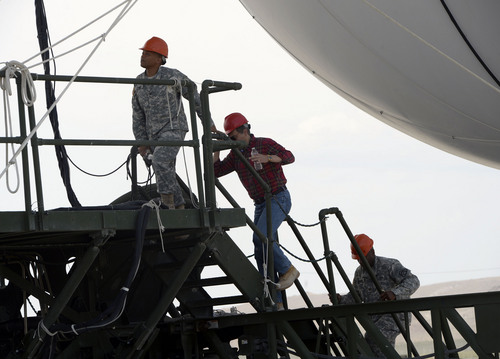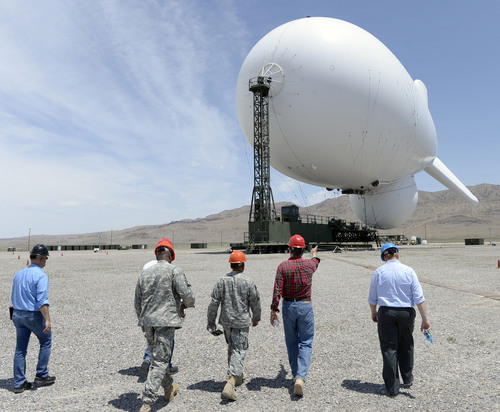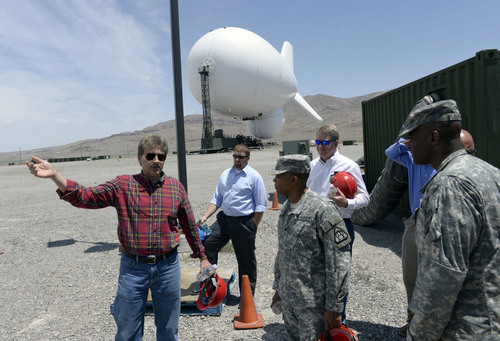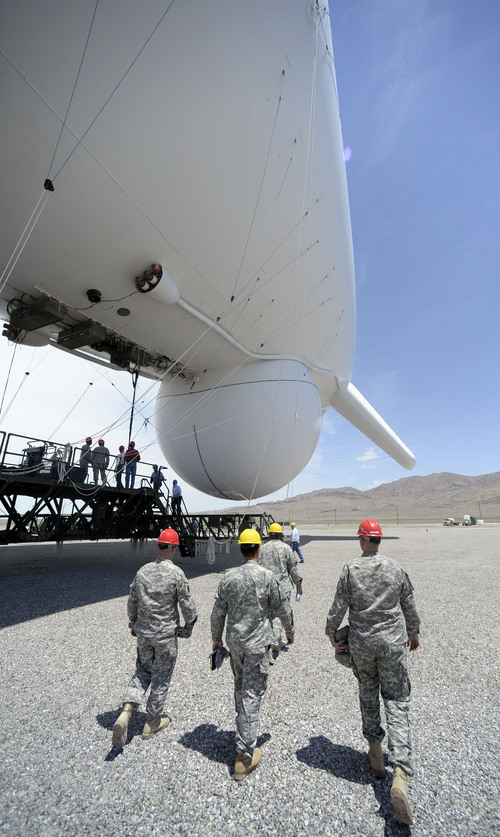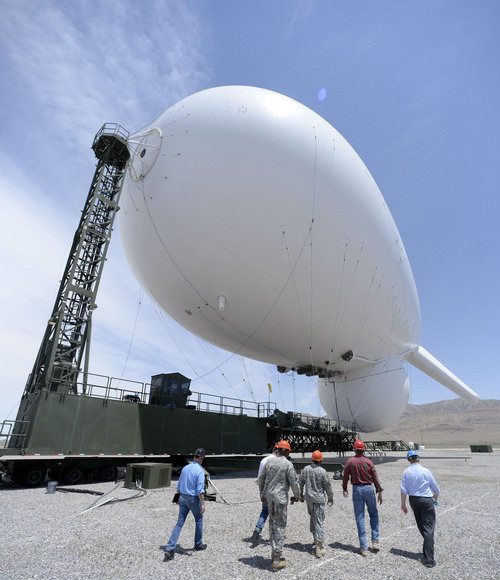This is an archived article that was published on sltrib.com in 2014, and information in the article may be outdated. It is provided only for personal research purposes and may not be reprinted.
Dugway Proving Ground • For three years they hung in the sky above Interstate 80 in Utah's west desert, but on Tuesday the Army began packing them up for Maryland where they will guard against missile attacks.
The Army on Tuesday held a ceremony here to mark the end of the testing for the Joint Land Attack Cruise Missile Defense Elevated Netted Sensor System, or JLENS. They have looked like blimps to anyone driving between Salt Lake City and Wendover.
JLENS is a pair of 243-foot-long balloon (or aerostat in Army terminology) that can elevate to 10,000 feet while tethered to the ground. It is a radar system designed to detect airborne as well as land and sea threats. Its surveillance ability is so advanced, it can track cars or even people in its 340 miles of radar coverage.
The Army and the manufacturer, Raytheon Co., have finished the Utah testing. The aerostats are being disassembled and trucks will haul them to the Aberdeen Proving Ground in Maryland.
There, JLENS will be used for three years in an exercise dubbed "Noble Eagle." JLENS is scheduled to join the exercise Oct. 1.
During Tuesday's ceremony, Army Col. Terrence Howard described the exercise by describing this scenario: A submarine is sitting undetected off the coast of northern Virginia and fires a cruise missile at Washington, D.C.
"Who's going to see it today?" Howard asked. "No one. We'll see it on CNN after the accident or the incident happened."
But with JLENS, the cruise missile could be detected in time for the U.S. military to fire its own missile to intercept the inbound ordnance, Howard and the radar system's other military and civilian proponents said Tuesday.
In an interview after the ceremony, Gary Hallinan, a civilian who is the product director for JLENS, said the Army doesn't actually expect the blimp to track any missiles on the East Coast.
Instead, JLENS will work with existing radar systems to better track civilian and commercial aircraft and alert authorities of any aircraft that deviate from their flight path or into restricted airspace.
"It's to alert them to anything that's moving that's not suppose to be," Hallinan said.
In a Jan. 22 Washington Post article, the American Civil Liberties Union expressed concern about JLENS ability to monitor the public. But Hallinan and Howard on Tuesday said JLENS has no video cameras or microphones and no one has asked the JLENS team to monitor what's happening on the ground on the East Coast.
"They've asked us to focus on the airborne threat," Howard said.
The Army on Tuesday also awarded certificates and mission coins to about 25 officers and enlisted personnel who trained and tested JLENS in Utah.
Twitter: @natecarlisle



